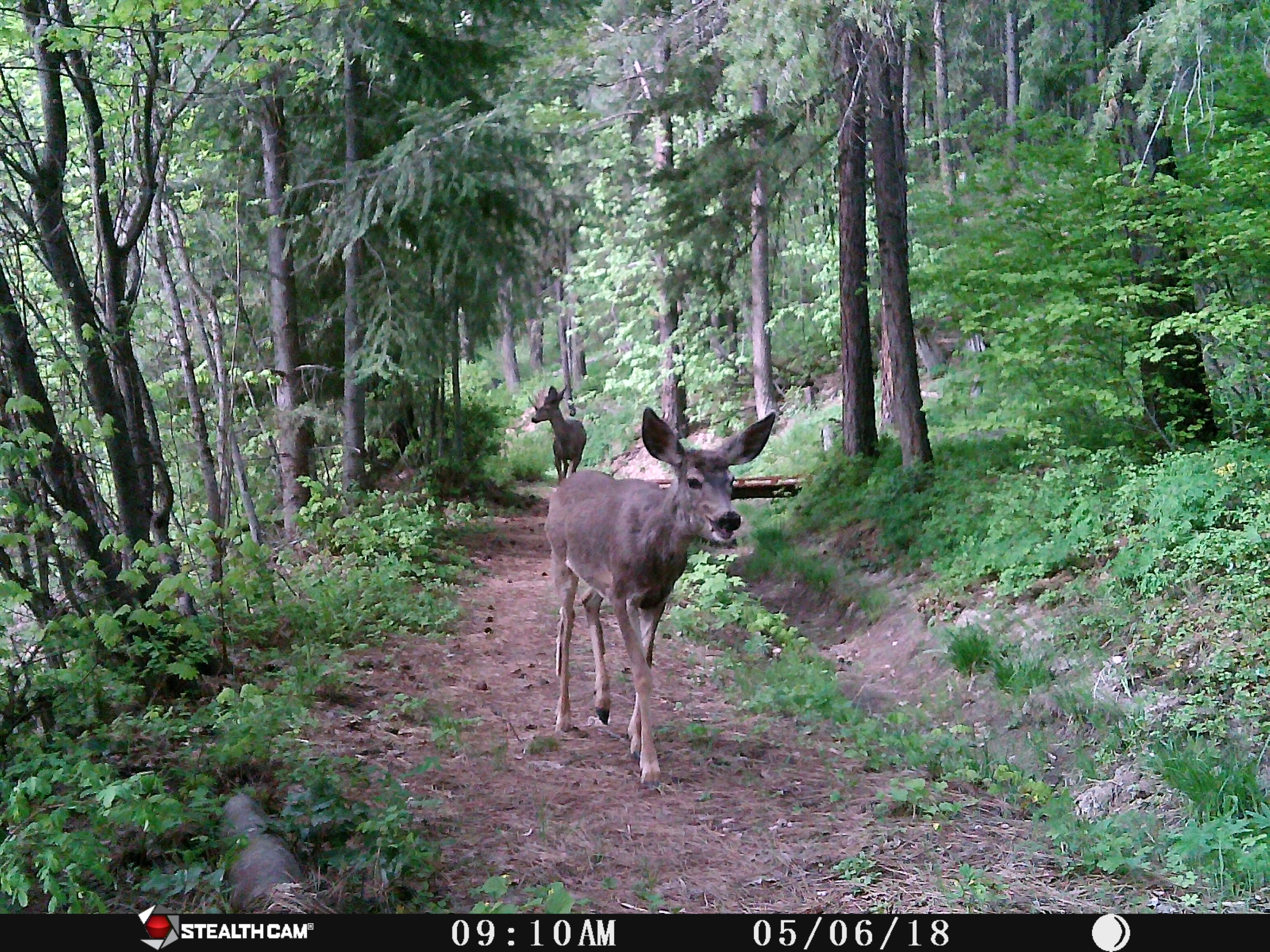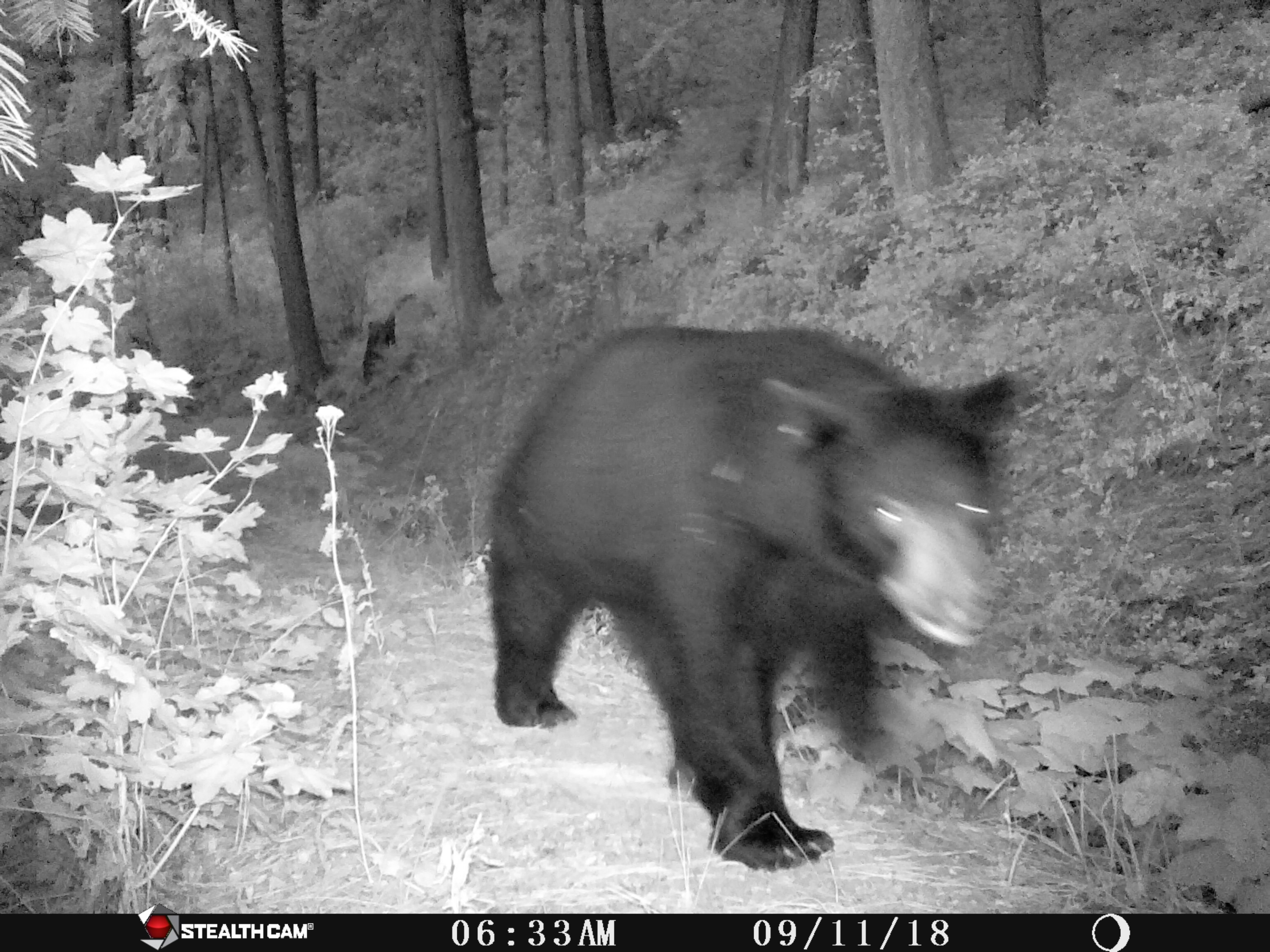In our last post, we were complaining that no matter which direction we pointed our game camera, we always managed to photograph the rear end of animals. With so many apex predators visiting Osprey Acres, we decided it was time to invest in a new creature camera.
We spent some time doing online research and we were struck by how much marketing and chat rooms were devoted to hunting. There was almost no mention of the back yard naturalist – which is a shame because for animal lovers, snapping stealthy pics of local critters is a tremendous joy.
As we’ve learned, the comings and goings of or local fauna has been an eye opener – not just learning how much activity was taking place but also learning when creatures were on patrol. And it’s also made us adjust how closely we watch our three-year-old when he’s playing outside. Fresh cougar sightings will do that to a nervous parent.
There are about six main brands of camera makers and dozens of cameras to choose from. Lots of reviews had good things to say about the Browning Strikeforce HD Pro ($160) so we’ve been comparing the new features with our old cheaper StealthCam.
There are several factors to consider when choosing a camera:
Trigger Speed & Recovery Time
How fast does the camera record an image when something runs by? As you can see below, this black bear barely entered the field of view before we snapped a close up. Without a quick trigger speed, we were missing out on fast-moving rabbits, but with the new camera we recorded photos on several occasions. We even picked up some (very blurry) bats at night. Trigger time should be lightning fast – you definitely want something under a second.
Recovery time (the time between shots) is also a factor. You want a speed under half a second ideally.
Bottom line – you want both trigger speed and recovery time to be as fast as possible or you’ll miss out on shots.
Rapid Fire
You want to get lots of action shots when they happen, so the burst is important. Most cameras allow you to shoot between one and seven shots per activity. My feeling is that memory is cheap and a 32 Gig card can hold lots of empty shots so max out the settings and get a camera that will take plenty of photos in a burst.
Detection Range and Field of View
Are you shooting down long trail corridors or big open fields? A longer range increases the odds of picking up movement and getting a good shot. Quality cameras will pick up movement around 100 feet away while cheaper models require movement right in front of the lens. Some cameras have a narrow range of view making them OK for trails but not great in the open unless something walks right past the camera.
Night Vision
The coolest critters seem to come out at night, so image quality is important but so is the type of flash the camera uses. Home security cameras often use floodlights (not a good way to discretely photograph animals) and some game cameras use a “white flash” which produces color photos at night at the expense of a flashbulb experience for the animals.
Some cameras have a “no glow” infrared flash that you can’t see with the human eye but the trade off is the image quality isn’t as good.
The most common is a red glow infrared flash, which has a tiny red light that blinks when snapping a photo. Animals do tend to notice it if they’re facing the camera judging by the number of glowing eyes we get on the second or third frame in a series.

Red glow infrared will still give you the glowing eyes on animals but it’s much less distracting than a white flash
Extra Features
Our Browning offers a time lapse + feature that snaps one photo per minute between dawn and dusk regardless of if it picks up movement. It also records the normal burst (7 photos in 7 seconds) when it detects movement. You can then create an animated movie. This is especially useful if you have a big open field and you want to see what’s moving on the fringes or if you want to try for smaller animals like birds and chipmunks that may not trigger the motion sensor.
Here’s an example of a time lapse video:
Higher end cameras have screens built in allowing you to review the shots in the field without removing the memory card, which is a nice feature if your camera is placed in places you only want to visit on rare occasions.









Jeff, love your blog. We bought a camera recently but haven’t put it up yet. I’ll do so now that I’ve seen some of your photos. Your reviews of a few cameras and their features will be useful too in case we’re not satisfied with ours.
And what are those creatures in your “video?” They look kind of like Homo Sapiens.
Bill and Bonnie Hanson
Shugart Flats